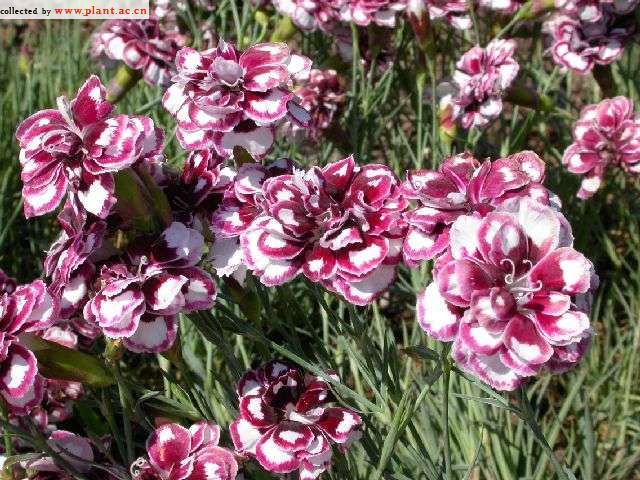Dianthus HoratioPink
科:石竹科
Family:Caryophyllaceae
属:石竹属
common name:Pink
introduce:Plant Type: Herbaceous perennial
Family: Caryophyllaceae
Missouri Native: No
Native Range: None
Height: 0.5 to 0.75 feet
Spread: 1 to 2 feet
Bloom Time: May - July
Bloom Color: Rose-pink with maroon center ring
Sun: Full sun (only)
Water: Medium moisture
Maintenance: Low
General Culture:
Easily grown in average, medium wet, well-drained soils in full sun. Prefers fertile, slightly alkaline, somewhat gritty loams with good drainage. Plants tend to die out in the center if drainage is not superior. Prompt removal of spent flowers may prolong bloom period, but is quite labor intensive. For larger plantings, it is perhaps more practical to simply shear off spent flowers after bloom. Shearing plants after bloom will trim the foliage mat and may promote a possible sparse rebloom in fall.
Noteworthy Characteristics:
慔oratio?is a low-growing hybrid pink cultivar. Linear, grass-like, blue-green foliage typically forms a mound to 6-8?tall and 15-24?wide. Double, fringed, rose pink flowers with maroon center rings appear mid-spring to early summer, with some sparse rebloom sometimes occurring throughout summer into fall. Flowers are moderately scented. Many of the plants in the genus Dianthus are commonly called pinks in reference to fringed flower petals that look as if they had been cut with pinking shears.
Problems:
No serious insect or disease problems. Crown rot may attack plants grown in moist to wet, poorly drained soils.
Uses:
Rock gardens, border fronts, edgings and containers. Dense mats may be grown together to form an interesting ground cover. May also be grown on difficult sites such as stone walls.
